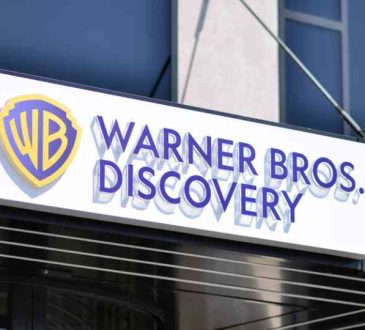3 Steps To Creating A Strong Company Culture

Thrown binders. Rampant, unchecked sexual harassment. Companies losing millions of dollars in valuation due to concerns about workplace practices. An immeasurable amount of media and attention has been devoted to breaking news about misconduct in companies, and countless persons have offered opinions as to how to create a strong company culture that helps to avoid misconduct issues, harm to corporate reputation, high employee turnover, and more.
In a Washington Post article entitled, “Uber, Google, and the long, lingering tail of #MeToo”, Amy Bess, an employment lawyer and partner with Vedder Price in Washington, was quoted as saying, “You almost have to assume that these things (meaning misconduct allegations) are going to become public in some manner and at some point.” And specifically as related to company culture, Ms. Bess was quoted as saying, “There’s an argument it’s worse for it (misconduct allegations) to come out later.”
So how do companies create a culture that deftly avoids the dangerous workplace behaviors and practices that can so badly damage a company’s image, as well as diminish employee productivity? The answer to this lies within an emphasis of a strong and intentional move to create a strong company culture. Every company and organization has a “culture”, whether they recognize it or not. And to create a strong company culture, it’s important for leadership to acknowledge that culture is more than the written workplace policies that exist deep within the company’s website. What kind of culture exists at your company? Are employees feeling respected and valued, or are they spending their work days on online job sites, looking for an escape? Here are three simple, easily-executed steps to put you on the right path.
STEP ONE: NAME AND CLAIM THE CULTURE.
John Kotter, a Harvard Business School professor and noted Leadership and Change expert, wrote an article in Forbes magazine outlining exactly what culture is. In this article, he wrote, “Culture consists of group norms of behavior and the underlying shared values that help keep those norms in place. Take your work, for example, a place where almost everyone shows up between 8:55 and 9:05. Why? Not because the CEO has decreed it, or because people are fired if they don’t do it. That’s just the way it is! That is a group norm.” The first step in creating a strong company culture is clearly defining what the culture is. Thoughtful decisions must to be made on every single detail of the policies and intangibles that combine together to create a “culture”. Examples of variables that craft your company’s culture include the following:
* What is our company’s mission, and how is that executed? Do we value a profit-above-anything-else model of conducting business? Are we concerned with the employee as a whole person, or solely with the “product” that they are generating during work hours? Do we assist employees by offering concrete mentorship opportunities during their time here? Are we more committed to the company’s bottom line than we are promoting employees and paying them commensurate to their experience level?
* What is the organizational system here?Are we a relatively “flat” organization, or do we feel that work is best executed when there is a hierarchical structure of managers and employees?
* What type of attire is appropriate in the workplace? Are we a buttoned-up, corporate environment, or can employees come to work in shorts and flip-flops? Do we prefer employees to be present and working within the four walls of a defined workspace, or do employees have the flexibility to work remotely?
* What will be our hard and fast rules regarding allegations of misconduct in the workplace? Do we believe that those who engage in misconduct should be perhaps treated differently according to their rank and the “value” that they bring to the company? Are investigations into allegations of misconduct conducted internally by our own HR staff, or do we need the objectivity of an independent, 3rd-party to investigate said allegations? Do we believe that a sexual harassment claim, for example, can be cured by sensitivity training for the accused, or does the allegation require something more? Do we believe that a zero-tolerance approach to misconduct is best?
STEP TWO: WALK IT LIKE YOU TALK IT.
The second step to creating a strong company culture is that after a decision has been made as to what the practices are that make the “culture”, you must execute that vision and those policies consistently and openly. If your company claims, for example, via company e-mails and internal communications, that they have a zero-tolerance policy for sexual harassment, that means zero. Not 3 times. Not 8 times if you are a member of the C-suite. Employees seeing their employer “living out” the values and culture that the companies espouse serves as a reinforcement that the employees themselves should adhere to the same standards.
STEP THREE: REMAIN OPEN TO CHANGE AS NEEDED.
Happy company cultures consist of places where employees feel respected, and know that their input, questions, and concerns are heard and valued. The popularity in new upstarts of the “all-hands”meeting, which are comprised of all company employees, from the CEO and down, reflect the opinions of today’s workers that they expect to be treated as partners, and not as inferiors. A company should remain flexible and open to employees’ concerns and opinions. Employees have opinions on just about anything and everything that creates the culture of the place where they spend so much of their time and energy. And whether employees want a consistent and transparent method for making complaints about misconduct in the workplace, have questions around pay parity, or simply want to push for Casual Fridays, it always benefits senior management to have their finger on the pulse of trending concerns and topics in the workplace.
Warby Parker, rated by Entrepreneur Magazine as a company with a “fantastic” culture, has a whole team at the company whose sole function it is to create company events that help foster a sense of community. SquareSpace covers 100% of health insurance for their employees, and also has a very “flat” management structure, where employees have easy access to management. REI hosts regular employee meetings where employees can anonymously submit claims to be answered by management in a group setting. Define your culture, consistently execute it, and remain open to change as needed. Employers and employees exist in a symbiotic relationship where one cannot exist without the other. With a good foundation and commitment to a strong company culture, there is no limit to what the company as a whole can achieve.
Have you read?
# Rich List Index, 2018.
# Best CEOs In The World, 2018.
# World’s Most Powerful People, 2018.
# World’s Most Powerful Women For 2018.
# India Rich List For 2018: Richest Indian Billionaires.
Add CEOWORLD magazine to your Google News feed.
Follow CEOWORLD magazine headlines on: Google News, LinkedIn, Twitter, and Facebook.
This report/news/ranking/statistics has been prepared only for general guidance on matters of interest and does not constitute professional advice. You should not act upon the information contained in this publication without obtaining specific professional advice. No representation or warranty (express or implied) is given as to the accuracy or completeness of the information contained in this publication, and, to the extent permitted by law, CEOWORLD magazine does not accept or assume any liability, responsibility or duty of care for any consequences of you or anyone else acting, or refraining to act, in reliance on the information contained in this publication or for any decision based on it.
Copyright 2024 The CEOWORLD magazine. All rights reserved. This material (and any extract from it) must not be copied, redistributed or placed on any website, without CEOWORLD magazine' prior written consent. For media queries, please contact: info@ceoworld.biz
SUBSCRIBE NEWSLETTER








